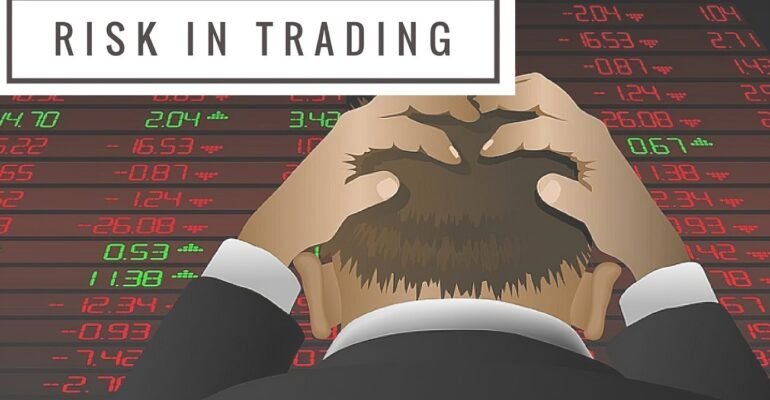Understanding Risk: How to Protect Your Investments While Trading
Understanding Risk: How to Protect Your Investments While Trading
Introduction
The allure of financial markets is undeniable. The potential to generate significant returns from trading stocks, forex, commodities, or other instruments draws countless individuals. But behind the promise of profits lies an inescapable truth: risk. Every trader, from beginners to seasoned veterans, faces the potential of losing money. Understanding the multifaceted nature of risk and developing robust risk management strategies is the cornerstone of sustainable success in trading. This article aims to empower you by providing a thorough guide to risk in trading and equipping you with practical techniques to safeguard your investments.
The Many Faces of Trading Risk
Let’s dissect the various types of risk that every trader needs to be aware of:
-
Market Risk: This encompasses the inherent volatility of financial markets. Asset prices can fluctuate due to a multitude of factors, including:
- Economic Conditions: Interest rates, inflation, unemployment levels, and economic growth significantly influence market sentiment.
- Geopolitical Events: Wars, elections, trade tensions, and other geopolitical developments can cause sudden shifts in asset prices.
- Sector-Specific News: A company announcement, earnings report, product failures, or regulatory changes can impact the value of an individual stock or an entire industry sector.
-
Liquidity Risk: This refers to the ease with which you can buy or sell an asset without significantly affecting its price. Less liquid markets pose a challenge, particularly when you need to exit a position quickly. If there aren’t enough buyers or sellers, you might have to accept a lower price (when selling) or pay a higher price (when buying), leading to potential losses.
-
Operational Risk: This category includes risks arising from failures in technology, human error, or fraudulent activities. Power outages, system glitches, inaccurate data, or internal fraud can all disrupt trading and result in financial losses.
-
Leverage Risk: Leverage, the use of borrowed money to increase the size of your trades, magnifies both potential gains and losses. While it can amplify your returns, using high leverage also increases the risk of substantial losses, especially during periods of market volatility.
-
Psychological Risk: Trading is an endeavor that often evokes strong emotions. Fear, greed, overconfidence, or the reluctance to admit mistakes can cloud judgment and lead to poor decision-making. Successful traders understand the importance of managing their emotions to maintain a disciplined approach.
Key Strategies for Protecting Your Investments
Now that you have a solid grasp of the types of risks involved, let’s explore essential risk management strategies:
-
Diversification: The Golden Rule
-
“Don’t put all your eggs in one basket” is a classic adage particularly relevant to trading. Diversification involves spreading your investments across:
- Asset Classes: Include a mix of stocks, bonds, real estate, commodities, or other asset classes in your portfolio.
- Sectors: Own stocks from various industries like technology, healthcare, energy, and others.
- Geographical Regions: Consider investing in companies operating in different countries or regions to spread your exposure.
-
The principle behind diversification is that different assets often perform differently under various market conditions. By diversifying, you reduce the impact of any single event or market downturn on your overall portfolio.
-
Stop-Loss Orders: Your Safety Net
- A stop-loss order is an instruction to your broker to automatically sell a security when it reaches a predetermined price below your purchase price.
- It acts as a crucial safety mechanism by limiting your potential losses in sudden market declines.
- Types of stop-loss orders:
- Standard Stop-Loss: A basic order that triggers a market sell as soon as your set price is hit.
- Trailing Stop-Loss: Adjusts upwards as the asset price rises, locking in profits while limiting downside.
-
Position Sizing: Risk Control in Action
- Position sizing means determining the appropriate size of your trades in relation to your overall account balance and risk tolerance.
- The fundamental rule is to never risk more than you can afford to lose on any single trade. A common guideline is to risk no more than 1-2% of your account balance.
- Proper position sizing prevents one bad trade from wiping out a significant portion of your capital.
-
Calculating Your Risk-Reward Ratio
- The risk-reward ratio assesses the potential profit of a trade relative to the potential loss.
- To calculate it, first determine your entry point and your target profit level. Then, identify your stop-loss level.
- Risk-reward is expressed as a ratio. For example, a trade with a potential gain of $200 and a potential loss of $100 has a risk-reward ratio of 2:1.
- Seek trades with favorable risk-reward ratios, where the potential reward significantly outweighs the potential risk.
-
Knowledge is Power: Stay Informed
-
Successful traders make informed decisions. Stay up-to-date on:
- Market News: Monitor financial news outlets and track economic indicators.
- Company-Specific Developments: Research the companies you’re considering investing in, including their financial statements, press releases, and management team.
- Technical Analysis: Learn to use charts and technical indicators to identify trends and support/resistance levels that can inform trading decisions.
-
By staying informed, you’ll be better equipped to anticipate market movements, identify potential risks, and make strategic trading adjustments.
-
The Power of Emotional Control
- Trading can be an emotional rollercoaster. It’s crucial to recognize that emotions like fear and greed can lead to impulsive decisions that often result in losses.
- Develop a trading plan: Outline your entry and exit criteria, risk management rules, and overall trading strategy.
- Stick to your plan: Discipline yourself to follow your plan, even in the face of market fluctuations and emotional urges.
- Practice mindfulness: Meditation or other techniques can help you stay grounded and prevent emotional reactions from swaying your judgment.
-
Embrace the Long-Term Perspective
- Short-term market fluctuations are inevitable. Don’t get bogged down by temporary losses or become obsessed with daily price movements.
- Focus on the long-term potential of your investments. If you’ve done your research and selected fundamentally sound companies, temporary setbacks should not derail your strategy.
- Patience is a virtue: Give your investments time to grow and avoid the temptation to engage in frequent, impulsive trading.
Additional Risk Management Tools
- Hedging: Hedging involves taking a position in an asset that is negatively correlated with another asset in your portfolio. It aims to offset potential losses in your primary investment.
- Options Strategies: Options contracts provide the right (but not the obligation) to buy or sell an underlying asset at a certain price by a certain date. Options can be used for risk management, income generation, and speculation.
- Insurance: Consider taking out insurance policies that can cover specific risks, like portfolio insurance or insurance against fraud.
The Importance of a Risk Management Plan
Having a formal risk management plan is incredibly valuable. This plan should outline:
- Your Risk Tolerance: Clearly define how much loss you’re comfortable with on individual trades and your overall portfolio.
- Risk-Control Strategies: Detail the specific techniques you’ll employ, such as stop-loss orders, diversification, position sizing, etc.
- Review and Adjustment: Schedule regular reviews of your risk management plan and adjust it as your circumstances or market conditions change.
Conclusion
Risk is an inherent part of trading, and there’s no way to eliminate it completely. However, by understanding the nature of risk and implementing the strategies outlined in this article, you can significantly reduce your exposure and increase your chances of long-term trading success. Remember, protecting your capital is the foundation upon which you build your trading profits. Approach trading with discipline, a thirst for knowledge, and a solid risk management plan, and you’ll position yourself to navigate the financial markets with confidence and resilience.








